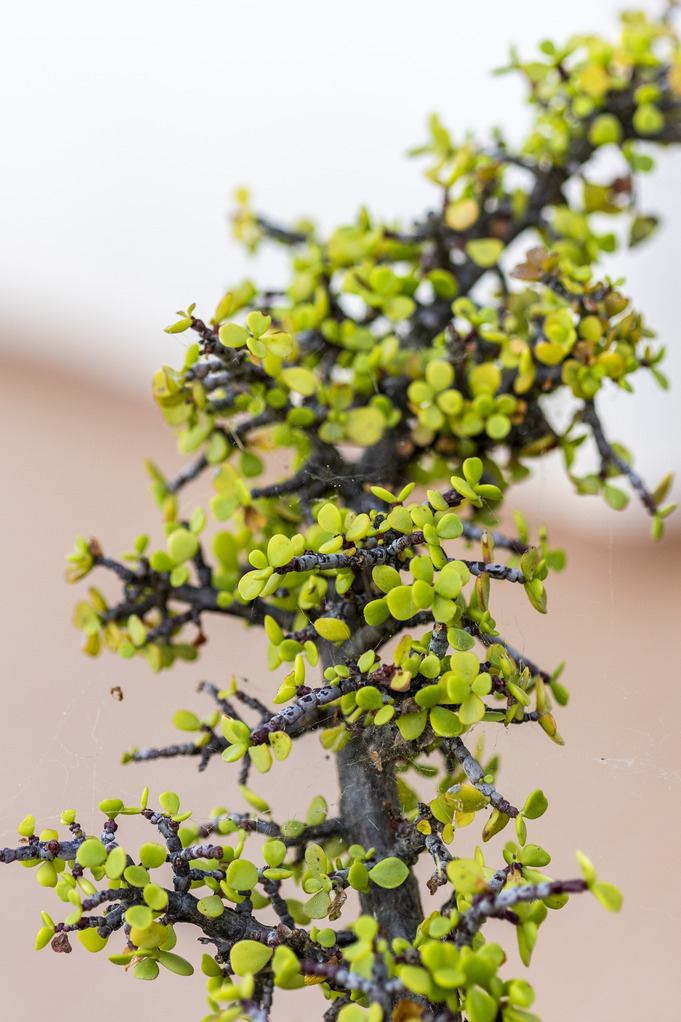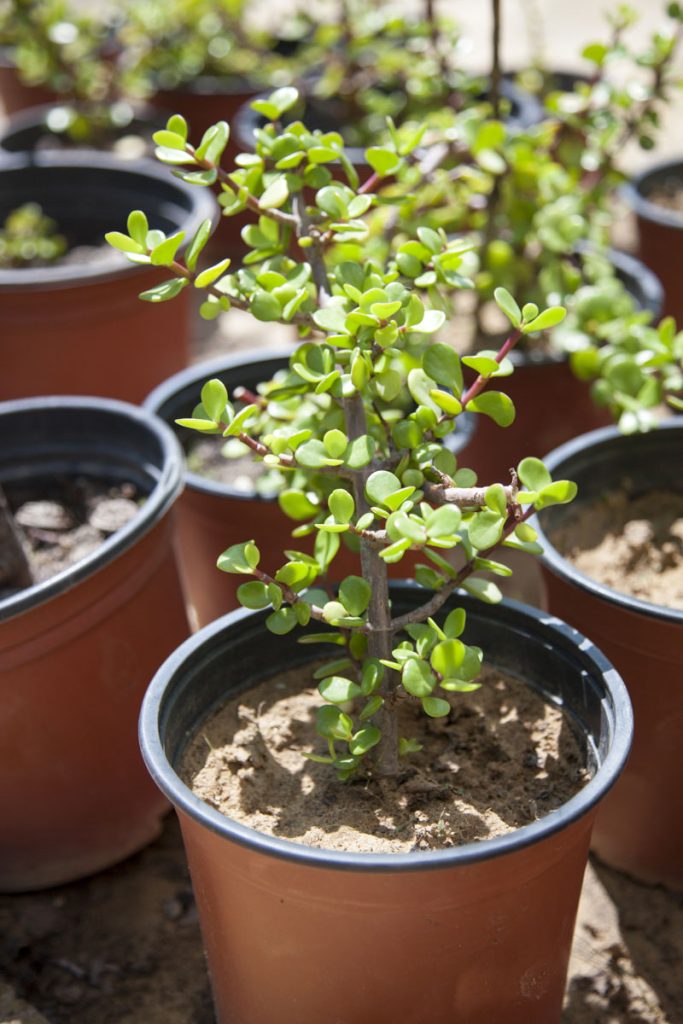Spekboom (Portulacaria afra) is a native South African tree known as the “environmental miracle worker” — with the potential to reduce carbon emissions like no other plant can. Indigenous to the Western Cape and Eastern Cape, it’s the country’s very own solution to tackling climate change and restoring the natural balance. Spekboom has the ability to offset more CO2 out of the atmosphere than the Amazon rainforest. This incredible plant has enormous carbon storing capabilities, also unique in that it stores solar energy to perform photosynthesis at night. This makes the Spekboom thickets 10 times more effective per hectare at carbon fixing than a tropical rainforest.


A Powerful Carbon Offsetter
ARC (Aquila’s Animal Rescue Centre) has a dedicated Spekboom tree nursery and thriving greenhouse, which forms part of the award-winning Eco Synergy Centre. Established as part of the reserve’s environmental sustainability mission, growing and planting Spekboom trees has become a vital component in Aquila’s mission to restore the Karoo’s natural habitat and combat climate change.
Spekboom thrives in the Karoo’s unique semi-arid landscapes. The mountainous region provides the ideal environment for this resilient tree, which thrives in hot, dry conditions with minimal rainfall. Spekboom’s deep taproot system allows it to access water stored deep underground, further ensuring its survival in harsh conditions. Many plants in this region have adapted to these harsh conditions. From the vast grasslands that sweep across the Great Karoo, to the beautiful and intricate Fynbos flowers that bloom from Table Mountain to the Garden Route, to the rare renosterveld shrublands teeming with wildlife, the Karoo is home to one of the world’s most impressive and resilient biomes.
The ability of Spekboom to thrive in the Karoo, where not many trees can, is a statement to it’s incredible contribution towards environmental sustainability. Spekboom has the ability to offset more carbon dioxide from the atmosphere than the Amazon rainforest. This remarkable succulent has enormous carbon storing capabilities. And, unlike most plants which emit more CO2 at night, Spekboom has the ability to store solar energy during the day to perform photosynthesis at night. This makes the Spekboom thickets 10 times more effective (per hectare) at carbon fixing than a tropical rainforest.
Why is Spekboom More Effective Than the Amazon Rainforest?
The Amazon rainforest is undeniably crucial for regulating global CO2 levels. While the Amazon rainforest boasts a vast and complex ecosystem with an irreplaceable role in regulating global climate, Spekboom offers a unique advantage in terms of carbon sequestration efficiency per unit of land area. Several factors contribute to Spekboom’s exceptional efficiency in carbon capture:
CAM Photosynthesis:
Spekboom’s night-time CO2 intake through CAM (Crassulacean Acid Metabolism) allows it to capture carbon for a longer duration compared to trees reliant solely on daytime photosynthesis. This extends its carbon-fixing window by a significant margin.
Leaf to Stem Ratio:
Spekboom possesses a high leaf-to-stem ratio. Leaves are the primary sites of photosynthesis, and a greater number of leaves translates to increased carbon capture potential.
Fast Growth Rate:
Spekboom exhibits a relatively rapid growth rate, especially in its early years. This rapid growth translates to faster biomass accumulation, further accelerating the rate at which CO2 is removed from the atmosphere and stored within the plant’s tissues.
Fire Resilience:
Spekboom’s succulent nature makes it somewhat fire-resistant. Compared to rainforest trees that are highly vulnerable to wildfires, Spekboom stands a better chance of surviving fires and continuing to store captured carbon over longer timescales.

The Scientific Properties of Spekboom
Spekboom thrives in the Karoo’s semi-dessert landscapes. Belonging to the Didiereaceae family, these succulents are known for their ability to store water in their thick and fleshy leaves, making them well-adapted to arid environments. Spekboom’s small, round leaves minimise water loss through transpiration, further contributing to its drought tolerance.
However, Spekboom’s true power lies in its Crassulacean Acid Metabolism (CAM) pathway. This unique photosynthetic process allows the plant to take in CO2 at night, when temperatures are cooler and water loss is minimized. The CO2 is then stored as a temporary organic compound, malate, which is converted back into sugars during the day through photosynthesis. This CAM pathway not only conserves water but also allows Spekboom to maximize carbon capture throughout the day and night cycle.



